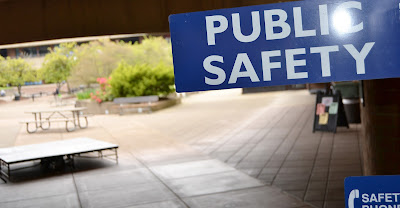Week 9 - Photo story assignment
The first stage of the logging process is to fall the trees. Here Larsen Arndt is using a Stihl chainsaw to make the backcut on a Douglas fir. The faller examines the tree to see where the tree should be fell, then the faller puts a 'face' on the side of the tree where it is to be fallen. After the face is hit out of the way with an ax, the faller starts cutting on the backside. If the tree starts to lean away from where it should be fell, the faller places a plastic wedge in the cut to help direct the tree the other way. The backcut should be as straight as possible to avoid the tree pulling to one side or the other from the holding wood.

After the tree is on the ground, it is measured to a certain length (normally about 40 feet long) and bucked (bucking the log refers to cutting the lower portion of the log off). Larsen Arndt pulls the tape measure from Alan Merrill after bucking a log off to be hauled to the landing at a job in Salem, Oregon on May 26th, 2017.

Dale Zoon uses the Caterpillar loader to carefully stack logs onto the log truck to be taken to the mill for processing a job in Salem, Oregon on May 26th, 2017. The loader piles ~55,000 pounds of logs onto the truck, then the truck driver throws cable binders around the load and ties the logs together. The driver then hits the end of the logs with a log brand to show the mill what company the logs are from.
This overall shot shows the landing at the base of the clear cut. Dale Zoon carefully stacks logs onto a Valley View log truck on May 26th 2017. Next the truck driver will put his binders around the load, brand the logs, and head to the mill.





Comments
Post a Comment